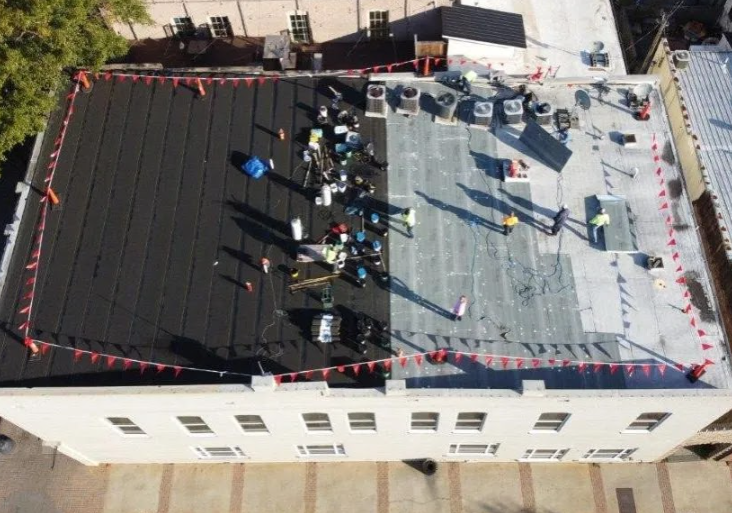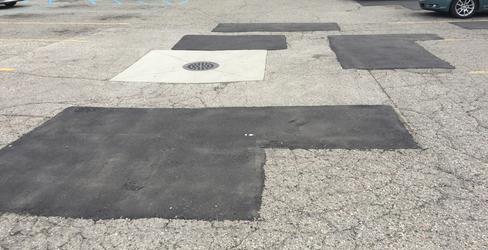We’ve witnessed first hand what the cycle of perpetual patching in asphalt can do and it’s not pretty nor does it last. There used to be an old adage in paving that any alligatored asphalt needed to be removed and replaced. We typically only recommend full depth removal in cases where there are potholes, sinking or rutting which is typically indicative of a structural failure to the substrate. Unfortunately asphalt does crack over time; and when it is necessary for a patch we recommend a full depth isolated patch vs a resurface patch which is only a temporary repair. When these are done correctly they can be a good solution. Unfortunately they are rarely done correctly and contractors tend to jump to patching to save their client money upfront when other options might align more with their asset strategy.
When patching is necessary we take these steps to ensure they are done correctly to get to the root of the issue as well as mitigate the wear on the surrounding asphalt.
- Core Samples: In areas of potholes, sinking and rutting, it is important to address what is causing the asphalt to fail in that particular area. In those cases, we do a core sample to get a more comprehensive picture. A core sample will tell us how thick the asphalt is, if paving fabric is present, the type of substrate, the compaction rate and if moisture is present.
- Extend Beyond the Last Crack: To reduce unraveling of edges and reflective cracking in the new asphalt a patch should extend at least 2 feet past the last crack or pothole.
- Maintain Adequate Spacing: Avoid clustering patches too closely together. Patches should be at least 15 feet apart from each other. This spacing helps distribute the load evenly across the pavement and minimizes the risk of localized stress points that could lead to premature damage.
- Tack Edges and Seams: Tacking the edges where the old asphalt meets the new asphalt helps to prevent moisture from sinking into the substrate from the new seam, helping to mitigate quicker deterioration and potential unraveling at the edges..
- Extend to the Curb: When patching areas located near curbs, it’s best to run the patch all the way up to the curb. This ensures a seamless transition between the patched area and the curb, reducing the risk of water infiltration and preserving the integrity of the surrounding pavement.
Following the tips above can vastly improve the lifespan of full depth patches. However, anytime you cut into existing asphalt it compromises the structural integrity of the adjacent pavement causing it to deteriorate at a faster rate. Owners need to be aware of that and incorporate long term asphalt repair plans into future budgets to ensure sustained durability and uniform appearance over time. If you need assistance choosing the right path for your asphalt we are here to help!




